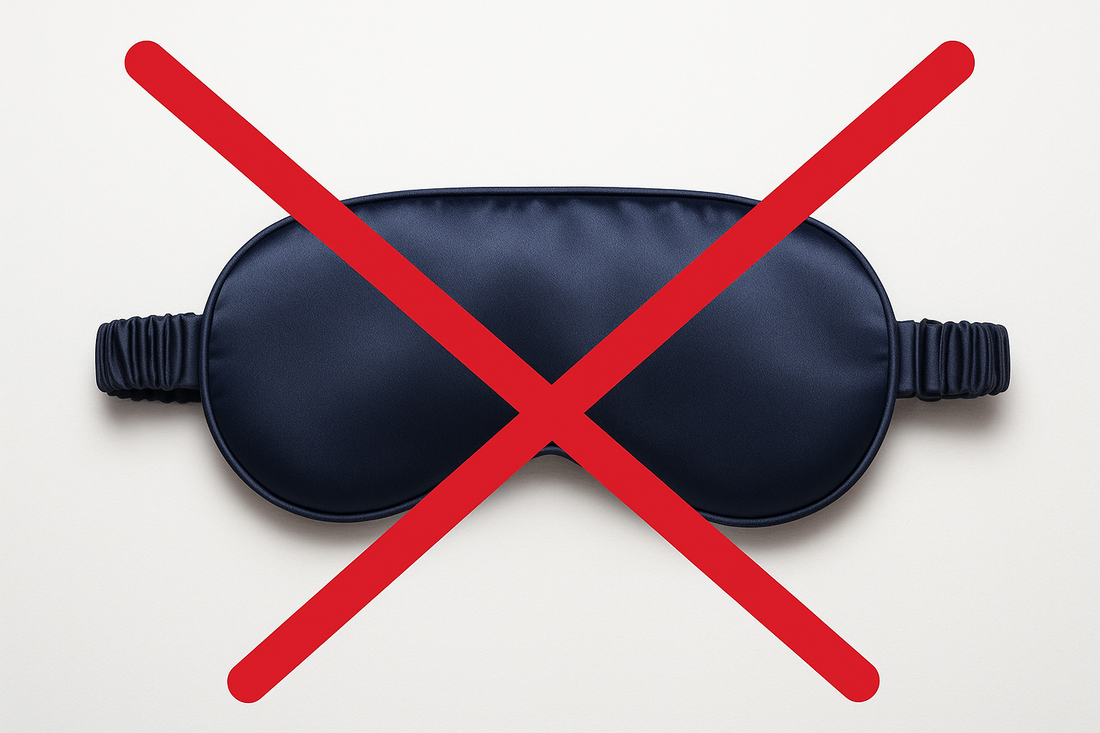Sleeping Masks vs Eye Tape: Which Is Better for Nighttime Dry Eye
Are sleeping masks or eyelid tape more effective for overnight dryness? Discover the strengths and limitations of each — and how combining them may offer the best protection.

Sleeping Masks vs Eye Tape: Which Works Better for Nighttime Dryness?
If you’ve tried sleeping masks to combat dry eyes at night and still wake up irritated, you’re not alone. Many struggle to find a solution that truly seals in moisture without discomfort. This post compares two common approaches — sleeping masks and eyelid tape — exploring how each works, their pros and cons, and when one may be superior. For deeper context on overnight dryness, check out our cornerstone guide: The Complete Guide to Dry Eyes.
Quick Navigation
1. How Sleeping Masks Work
Sleeping masks (or eye masks) act as a physical barrier to block airflow and reduce moisture evaporation around the eyes. When properly fitted, they can slow tear loss by limiting ambient drafts or bed currents — effectively creating a micro “shield” of humidity near the eyes. However, their effectiveness heavily depends on fit, material, and seal integrity. Gaps, shifting during sleep, or mask compression can all compromise performance.
2. How Eyelid Tape Works
Eyelid tape (gently applied adhesive) helps by keeping eyelids in firm contact throughout the night, reducing the chance of micro-gaps forming. When lids meet fully, there’s less air intrusion and better moisture retention. Because the tape moves with your eyelids (not your mask), it tends to maintain its seal more reliably, especially when you shift during sleep.
3. Masks vs Tape: Pros & Cons
Sleeping Masks — Advantages
- Non-adhesive — good for very sensitive skin
- Easy to put on and take off
- Often lightweight and comfortable for side sleepers
Sleeping Masks — Disadvantages
- Can shift during the night, breaking the seal
- Require perfect fit — small gaps ruin effectiveness
- May press on eyes or lids, causing discomfort
Eye Tape — Advantages
- Maintains a consistent seal, even with movement
- Minimal bulk — no fabric pressing on lids
- Works with all sleep positions and mask styles
Eye Tape — Disadvantages
- Some adhesives may irritate sensitive skin
- Requires careful, gentle application
- Must be removed carefully to avoid pulling eyelid skin
4. Which Is Best for Your Situation?
Neither solution is perfect for everyone — your best pick depends on:
- Skin sensitivity (tape may irritate some)
- How much you move in sleep (masks may slip)
- Whether you also use CPAP or have airflow factors
- Shape of your face and masks (some masks naturally leak toward eyes)
- Whether you already have eyelid closure issues (lagophthalmos)
If your mask fits very well and stays in place, a sleeping mask may suffice. But if you wake up with irritation or notice drafts despite using a mask, combining mask + eyelid tape can provide better consistency.
5. When to Use Both Together
In some cases, using both a sleeping mask *and* eyelid tape gives the best protection:
- Mask handles large ambient leaks; tape handles micro-gaps
- Once you tape, you can relax mask tightness slightly, reducing pressure complaints
- Good for users with dry eyes + CPAP users with small leaks
If you're using both, apply tape after mask fitting so you don’t interfere with mask edges. Over time, you’ll find the balance of comfort and seal that works best for your eyes.
Shop the Solution
Still struggling with nighttime dryness even after mask and seal tests? Try a gentle eyelid adhesive to supplement your setup. EyeOasis Sleeping Tape helps maintain moisture while you sleep.
Sources
- Craig JP et al. *TFOS DEWS II: Tear Film Homeostasis and Dry Eye Disease.*
- Hayirci E et al. *Ocular Surface Problems in CPAP Users.* Sleep Medicine, 2012.
- American Academy of Ophthalmology. *Exposure Keratopathy & Nighttime Eye Protection.*
- Nationwide Clinical Dry Eye Studies, 2020.
